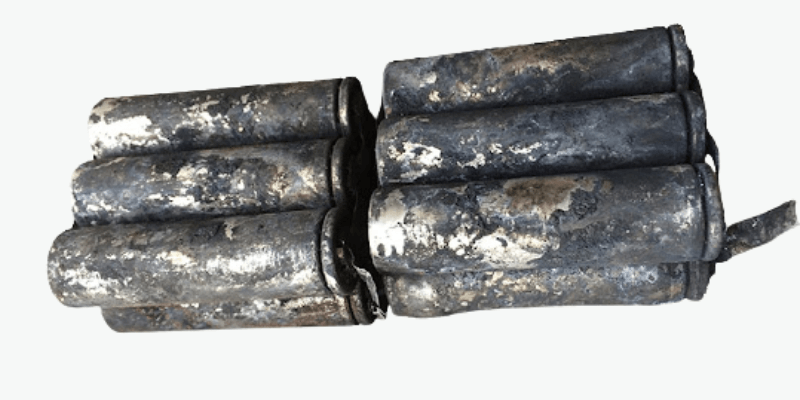Key Takeaway:
- Jelajahi panduan kegagalan baterai lithium-ion, menutupi masalah pengisi daya, sirkuit pendek, tusukan, pembengkakan, dan terlalu panas, dengan tips untuk pencegahan dan penanganan yang aman.
Adalah milik Anda Baterai lithium khusus berkinerja buruk? Hari ini, mari kita jelajahi penyebab kegagalan paket baterai dan pelajari cara mencegahnya.
Masalah pengisi daya
Menggunakan pengisi daya yang salah dapat menyebabkan masalah seperti pengisian berlebihan dan pembengkakan dalam paket baterai lithium.
Pengisi daya dirancang untuk mencegah pengisian berlebihan, tetapi pengisi daya yang salah dapat menyebabkan masalah ini.
Paket baterai lithium tidak boleh diisi di bawah 32 ° F. Ini dapat menyebabkan pelapisan lithium permanen pada anoda, membuat baterai lebih rentan terhadap kerusakan.
Over-Discharge sama pentingnya dengan baterai lithium-ion yang berlebihan.
Tegangan tidak boleh jatuh di bawah 2 volt, karena anoda dan katoda akan rusak.
Ketika diisi ulang di atas 2 volt, kolektor arus anoda akan larut, dan ion tembaga dapat mengendap, menyebabkan sirkuit pendek. Katoda juga melepaskan oksigen, yang menyebabkan kehilangan kapasitas permanen.
Sirkuit pendek sel
Kebakaran baterai lithium sering berasal dari kontak partikel logam di dalam baterai yang menyebabkan sirkuit pendek.
Sementara celana pendek kecil hanya menyebabkan pelepasan diri, celana pendek utama dapat memicu pelarian termal, di mana panas memadukan isolasi dan menyebabkan pembakaran. Masalah ini biasanya disebabkan oleh masalah manufaktur yang memungkinkan debu logam menumpuk.
Untuk mencegah kegagalan ini, meningkatkan kontrol kualitas dan menggunakan kamar bersih untuk mengurangi pembuatan debu dapat dilakukan.
Tusukan dan kebocoran
Pengguna akhir dapat mengalami tusukan dan kebocoran dalam paket baterai lithium selama pengiriman, transportasi, dan penanganan.
Tusukan akan terjadi ketika elektrolit bocor keluar dari kontak dengan benda tajam, tetesan, atau tekanan mekanis lainnya. Jumlah kebocoran bervariasi tergantung pada ukuran paket baterai dan nomor sel yang tertusuk.
Tusukan dan kebocoran bisa berbahaya. Pengguna harus mengambil tindakan pencegahan untuk menghindari kontak dengan elektrolit bocor, karena mereka dapat melakukan hubungan pendek di dekat elektronik.
Pembengkakan paket baterai
Enklosur baterai mungkin menggembung karena pembengkakan baterai lithium. Ini dapat terjadi karena beberapa alasan, seperti intrusi kelembaban, pengisian yang berlebihan, atau penuaan.
Seiring bertambahnya usia baterai, ia dapat menyebabkan suhu meningkat.
Untuk mencegah pembengkakan baterai, hindari mengekspos paket untuk kelembaban dan batasi pengisian konstan.
Masalah pemanas
Overheating adalah kegagalan baterai lithium yang umum, yang umumnya dipimpin oleh pengisian berlebih atau suhu tinggi.
Thermal Runaway adalah masalah lain yang dapat mempengaruhi baterai lithium-ion, di mana elektrolit dan katoda rusak karena suhu dan tekanan internal yang berlebihan. Ini akan mengakibatkan akumulasi gas dan risiko pengapian atau ledakan.
Sistem manajemen baterai (BMS) dirancang untuk mencegah pelarian termal dengan memantau dan mengatur faktor -faktor seperti pengisian berlebih, tegangan berlebih, dan suhu. BMS memastikan baterai beroperasi dalam batas yang aman dan dapat menyimpan informasi diagnostik untuk membantu memecahkan masalah.
Apa yang Harus Dilakukan Saat Paket Baterai Anda Gagal
BMS mencegah sebagian besar masalah paket baterai. Masalah lain seperti celana pendek atau penuaan hanya menyebabkan baterai berhenti bekerja.
Seharusnya menyadari bahaya seperti kebocoran dan pelarian termal. Jika ada kebocoran, tempatkan baterai lithium-ion di dalam kantong yang dapat disegel dan bersihkan elektrolit dengan jus lemon atau cuka.
Selama kegagalan, paket itu mungkin mendesis, melampiaskan gas, menyala, atau meledak. Perlakukan seperti api biasa, menggunakan alat pemadam busa, natrium karbonat, atau air.
Jika baterai lithium telah membengkak, lepaskan dari perangkat dan hubungi pabrikan untuk kembali atau membuangnya dengan benar.
Kesimpulan
Singkatnya, penyebab utama kegagalan baterai lithium-ion meliputi masalah pengisi daya, sirkuit pendek sel, tusukan dan kebocoran, pembengkakan paket baterai, dan panas berlebih. Penggunaan pengisi daya yang tepat, kontrol kualitas, dan sistem manajemen baterai sangat penting untuk mencegah kegagalan ini.
Ketika paket baterai lithium-ion gagal, penting untuk menanganinya dengan aman dengan mengandung kebocoran dan membuang baterai dengan benar.
Artikel Terkait:

